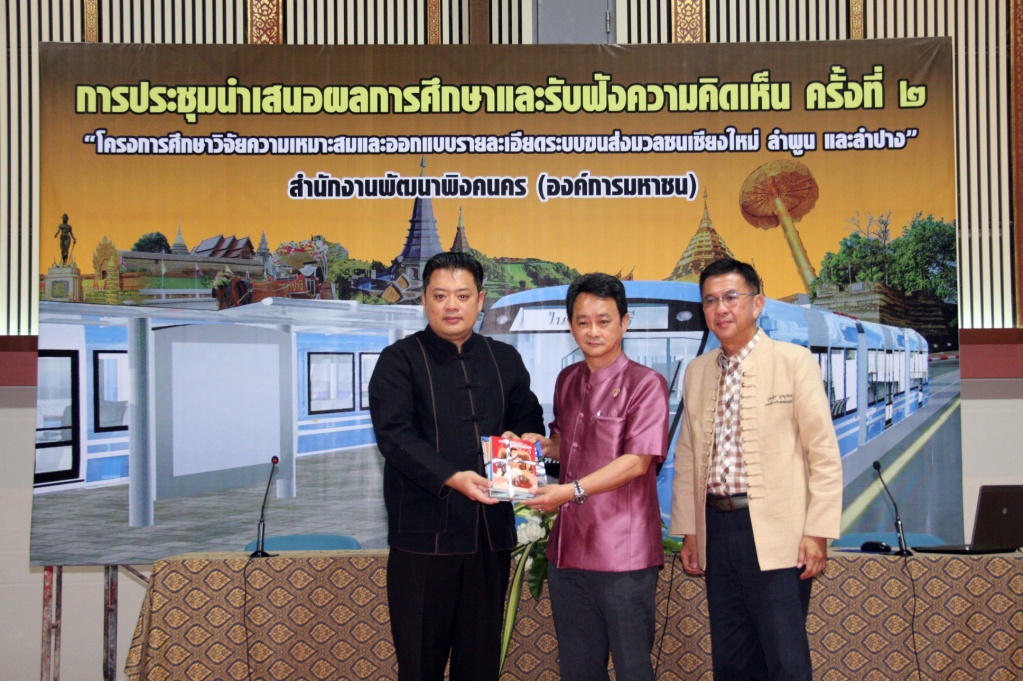CityNews – A meeting was held at the Chiang Mai International Convention and Exhibition Centre to discuss the results of research carried out to find out the best mass transit system for Chiang Mai, Lamphun and Lampang, and how to begin production of such a system.

The meeting, presided over by Chiang Mai Governor Suriya Prasatbandit, focused on listening to opinions and research regarding setting up new mass transit systems in the three cities.
Results from research carried out by the Pinkanakorn Development Agency (A Public Organisation) were also shared with those who attended the meeting.
The research concluded that the most appropriate mass transit system for Chiang Mai would be a series of trams across the city.
Trams can carry many passengers and do not release pollutions and can be scheduled well, creating a reliable and punctual service.
The study looked into where best to set up the tram service and aimed at helping solve problems in the city such as congestion and songtaews. Tourist attractions and densely populated areas also would benefit from a tram system.
The study took eight months with a 30 million baht budget.
The research also proposed connecting Chiang Mai, Lamphun and Lampang with the same tram system.
The planning and development project will take two years after given the go-ahead if all parties, along with the National Transportation Committee agree to implement the new mass transit system.
The tram system would cost around 1 billion baht.
Pinkanakorn Development Agency will also partly support the project and ask for support from the government. They believe at least 10 billion baht (10,000,000,000 baht) would be needed to support the extension of the city, tourism, and the opening of an ASEAN economy.
They planned to divide the construction project into two. The first period (5 – 15 years) includes five routes, in which the first three routes are:
1) The Red Route would start from Chiang Mai International Convention and Exhibition Centre, continue down to the city, around the moat clockwise, and back to the centre.
2) The Blue Route would start from Chiang Mai Night Safari, passing Chiang Mai International Airport towards Chiang Mai city, drive around the moat clockwise and back to Night Safari.
3) The Yellow Route would start from Chiang Mai Zoo, passing Rajamangala University of Technology Lanna and Chiang Mai University towards Chiang Mai city, drive around the moat, pass Suandok hospital and then back to the Zoo.
Stop signs would be positioned every 300-400 meters.
Songthaew drivers have yet to oppose the project, but see it as a chance to work together in the future.
According to Sarawut Srisakun, the director of Pinkanakorn Development Agency, this mass transit system will not only be useful to residents in downtown Chiang Mai, but will also stimulate the economy for residents and nearby provinces as well as facilitate better tourism.
Chiang Mai Provincial Administrative Organisation and other organisations involved will present the study, which will be summarised as a report next two months, to the government in order to ask for budget and management for the project.
UPDATE: A video explaining the plans and the routes the trams would take has been shared on YouTube, and can be seen here.